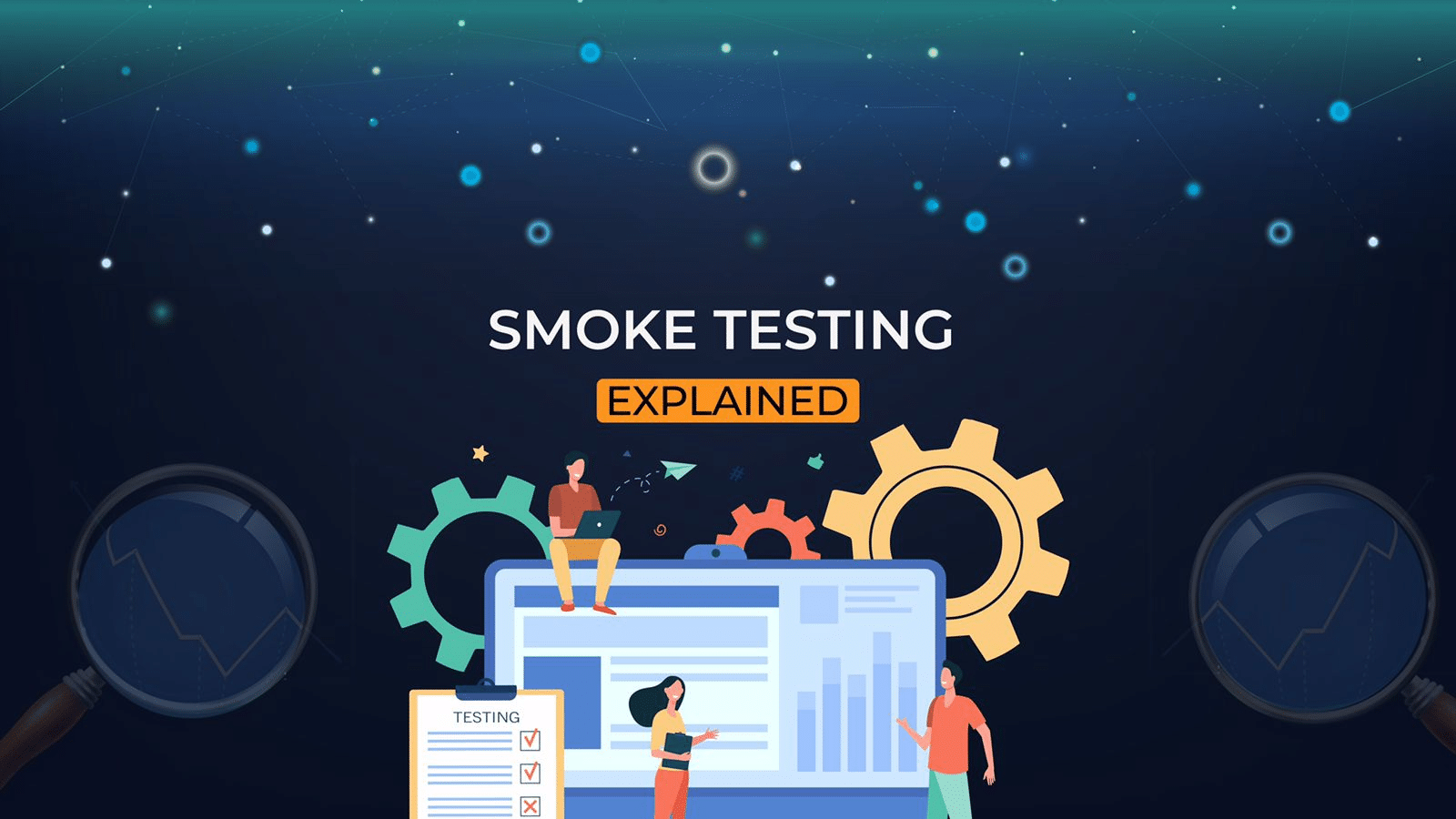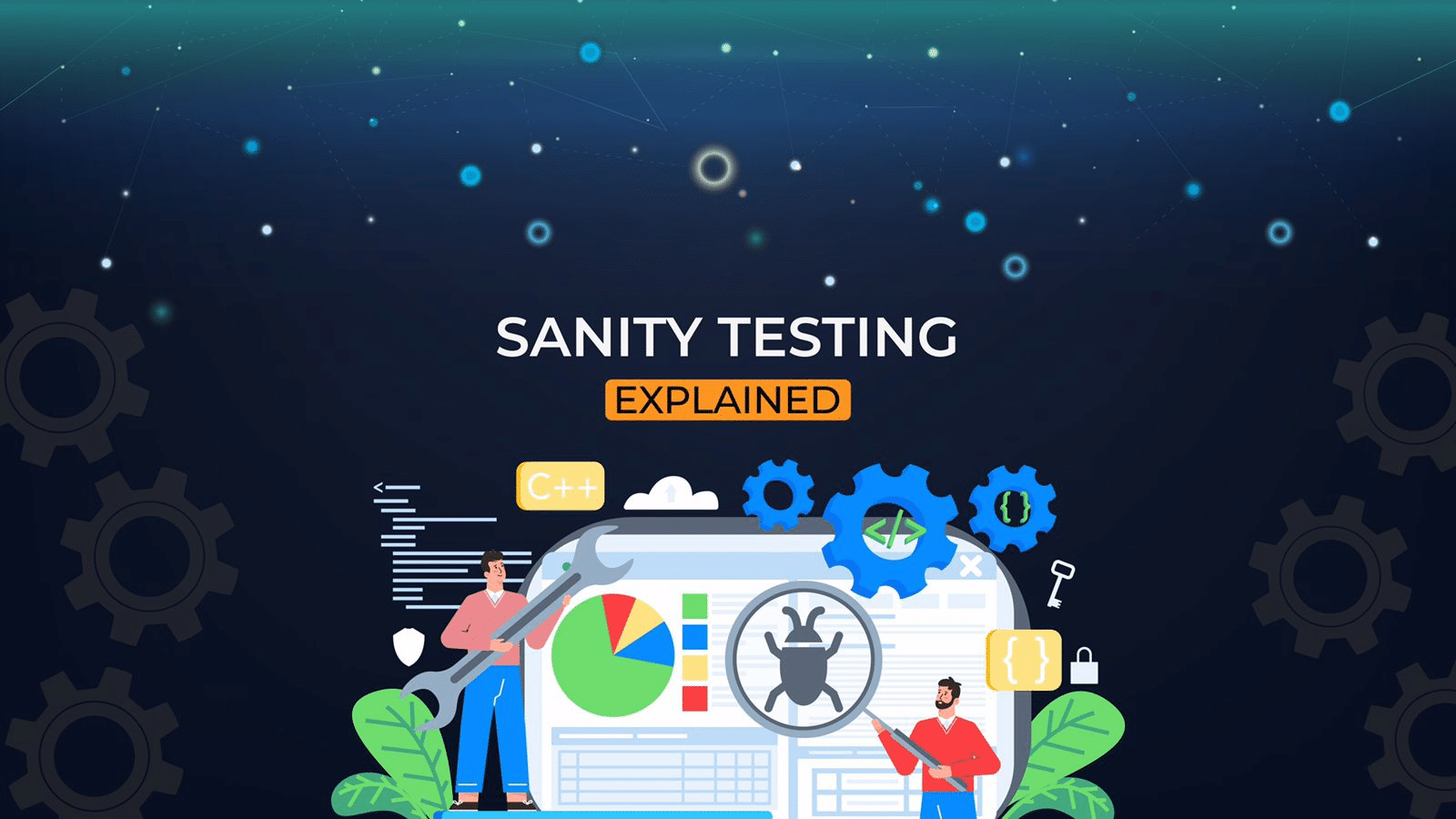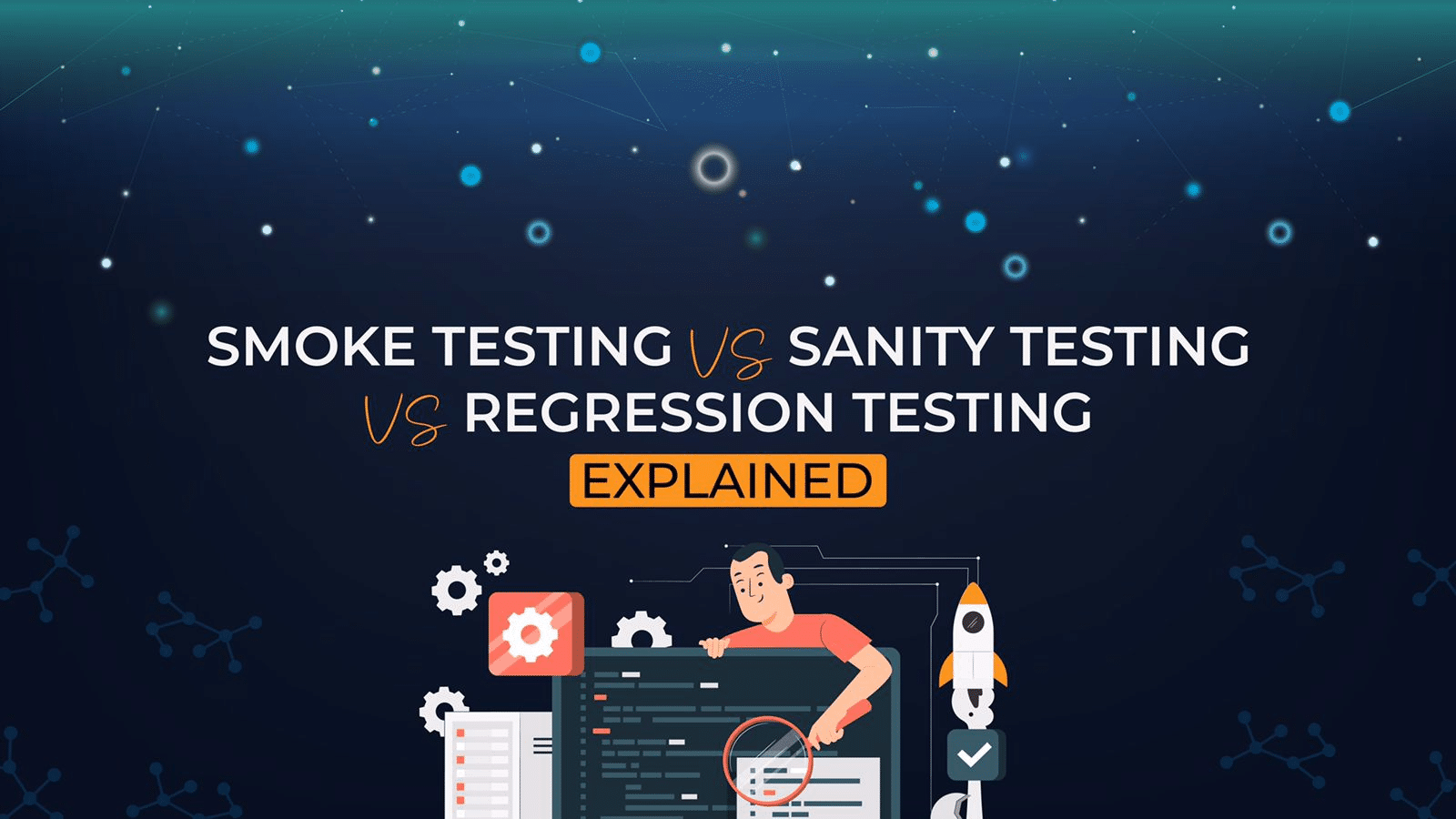Looking to understand the differences between Smoke Testing vs Sanity Testing vs Regression Testing? You’re in the right place. This guide breaks down each testing methodology, when to use them, and their pros and cons. Let’s dive in!
Smoke Testing, Sanity Testing, and Regression Testing are frequently employed testing methodologies in software development life cycle and its quality assurance. Each testing procedure has its distinct objectives and importance.
In this comprehensive guide, we shall perform an in-depth comparative study of these testing techniques.
What is Software Testing?
Software testing is an organized and logical testing process of analyzing a software application and system to discover potential defects and risk factors. It guides software developers to rectify identified errors.
It involves a variety of testing techniques aimed to ensure that the software;
- Meet user requirements
- Performs as intended
- Reliably operate through multiple scenarios
Software testing is essential to achieve quality assurance, trustworthiness, bug detection, risk mitigation, customer satisfaction and compliance with quality standards.
What is Smoke Testing?

Smoke Testing is early-stage testing performed to ensure fundamental and essential functionalities of the software are performing accurately. It is a shallow level of testing. The objective of this testing is to identify significant issues that could create hindrances in conducting further testing.
When to Use Smoke Testing
The following bullet points outline when to use Smoke Testing for software quality assurance;
- It is commonly used as an initial check when software is designed. It verifies the software’s performance as planned.
- When multiple modules are integrated with each other smoke test ensures that this integration doesn’t cause any critical issues.
- When a new code is added to the repository, smoke testing verifies initial integration problems.
- After encountering a critical defect in the system, smoke testing assures that a new problem doesn’t arise.
- Smoke tests can serve as a subset of Regression Testing, where resources are limited.
- Before a major product is released or deployed, performing smoke testing validates the system’s stability and readiness for more testing.
- When software is deployed to a new environment or platform, smoke testing ensures that it performs as expected.
Benefits and Drawbacks
Smoke testing has the following benefits;
- It aids in the rapid detection of critical and fatal defects at the very beginning of software building.
- It is a cost-effective method of testing that prevents extensive testing.
- It has swift testing execution, providing quick feedback on the stability of the software.
- It is a valuable approach for ensuring cohesiveness among various modules of the system.
While the above may be true, Smoke Testing has the following drawbacks;
- Its scope is limited. It focuses on basic functionalities only.
- It does not ensure an error-free system, inducing a false sense of security.
- Updating smoke testing may require maintenance overheads.
- In large and complex software, performing smoke tests requires more resources or testers.
- Testing is influenced by the testing environment, changes in setting may affect test results.
- Relying merely on smoke testing might result in incomplete testing.
Real-world Examples
- Video Game Testing: In the gaming industry multiplayer games take place in real real time. Smoke testing is used to confirm a seamless gaming experience. The testing team ensures that the gamers can log in, join games, and interact with the gaming community without facing any critical issues. Game developers rectify gameplay breakdown bugs using smoke testing.
- Mobile App Release: Mobile app developers frequently use Smoke Testing to launch a new application. Before publishing an app on any app store like the Apple App Store or Google Play Store, smoke testing is employed to ensure user authentication, basic functionalities, and its performance across various devices and operating systems. This helps avoid negative user experience and app store disqualification due to significant issues.
Automation & Smoke Testing
Automation is an integral part of modern smoke testing procedures. It helps in achieving efficiency, accuracy, and reliability of software. Software quality assurance professionals could easily identify glitches in core functionalities of software build. Automation is highly recommended where continuous testing is necessary, such as continuous integration or continuous delivery pipelines.
What is Sanity Testing

Sanity Testing is also referred to as sanity check or build verification testing. It covers detailed testing targeting a particular area of the software. It examines a specific feature when an update is made in the software. It ensures that recent code upgrading doesn’t affect the existing functionality and code.
When to Use Sanity Testing
- The following are the times when it is appropriate to employ sanity testing;
- When minor code changes are made in the system, functional tests are done to ensure that the core functions remain the same.
- Sanity testing verifies integration points when the system is complex and multiple modules and components are integrated.
- It acts as a subset of regression testing. It helps in deciding whether comprehensive regression testing is needed or not.
- Prior to product release or deployment functional testing ensures the system’s stability to prevent last-minute surprise bugs.
- Executing sanity tests address urgent patches or hotfixes in the system.
Benefits and Drawbacks
Sanity testing has the following benefits;
- It serves as a useful tool for rapid confirmation when testers have limited time.
- It is highly efficient in performance, focusing on targeted areas of the software.
- It provides early feedback which results in risk mitigation.
- It ensures the compatibility of multiple modules within the software.
- It helps build confidence in qa team regarding the stability of the system.
On the other hand, sanity testing has the following drawbacks;
- It has a narrow scope leading to incomplete testing coverage.
- If previous testing is improper, sanity testing is ineffective.
- It does not guarantee the absolute absence of defects in the software.
- When resources are limited, it could be a substitute for rigorous testing.
- Maintenance and upgradation of sanity testing results in overheads.
Real-world Examples
- E-commerce Website Updates: In an e-commerce website setup, when the online retailer wants to make minor amendments to his website like adding new protruding, changing prices, or offering discounts, sanity testing comes into play. Sanity testing ensures all the functionalities prior to changes remain intact.
- Financial Software Updates: In the finance sector, sanity testing is used when companies update their financial software to execute regulatory changes or add or remove accounting features. QA team emphasizes core financial calculations and reporting procedures to ensure that these functions have been performed accurately.
Automation & Smoke Testing
Automation is an integral part of modern smoke testing procedures. It helps ensure the efficiency, accuracy, and reliability of software. Software quality assurance professionals could easily identify glitches in the system by automating smoke testing.
What is Regression Testing?

Regression Tests involve re-running of tests that are already performed. This repetition of tests ensures the new updates in the software haven’t caused unforeseen bugs or harmed current functionality. Regression tests aim to safeguard the stability and reliability of the software.
When to Use Regression Testing
Here are the appropriate times to execute Regression Testing in software quality assurance;
- Perform regression testing when new code is introduced for an update or feature enhancement.
- In continuous development environments, regression tests are conducted in cycles.
- In integrated modules, regression tests prevent unforeseen issues between various modules.
- Whenever a software is deployed in a new environment, this testing ensures that its performance remains unaffected.
- It is essential for critical bug fixes.
Benefits and Drawbacks
Regression Test has the following benefits;
- It helps in the detection of newly discovered bugs in software build.
- It provides continuous confirmation for maintaining reliability when modifications are made in the software.
- It prevents self-occurring code changes that could affect user experience.
- It reduces the risk of costly bug fixes by identifying defects at early stages of development.
- It is highly efficient, saving time, money, and resources.
The regression Test has the following drawbacks;
- For test development and execution, regression testing requires multiple resources.
- Running a complete suite of regression tests is time-consuming.
- It requires frequent upgradation which results in maintenance overheads.
- It has limited scope and may not cope with complex issues.
Real-world Examples
- Healthcare Systems: In healthcare systems, patients’ information and health record is in electronic form which is continuously updated to keep track record of patient’s health. Regression Testing is performed to ensure that patient data, prescriptions, and clinical procedures are maintained accurately and are secured.
- Aerospace and Defense Systems: In the aerospace and defense industry, where security and reliability are extremely important. Regression testing ensures that the software regulating aircraft systems, radar systems, and missile guidance systems is performing according to strict guidelines and regularly follows updates.
Automation & Regression Testing
Automation plays a pivotal role in improving the efficiency and effectiveness of regression testing. It is an essential component of modern software quality assurance. Automation assists regression testing in achieving speed and efficiency, continuous integration, comprehensive test coverage, resource optimization, and faster feedback.
Comparing Smoke Testing vs Sanity Testing vs Regression Testing
| Aspects | Smoke Testing | Sanity Testing | Regression Testing |
|---|---|---|---|
| Scope | Broad and shallow, covers major functions. | Narrow and focused,Target specific features | Comprehensive, provides detailed test coverage. |
| Objectives | Quickly identifies major issues in development. | Verify particular functionalities after minor code changes. | Ensure existing functionalities remain the same after update. |
| Test Depth | Surface level testing | Deeper testing of specific areas. | Deeper and comprehensive testing across the software. |
| Test Coverage | Minimal test coverage | Targeted test coverage. | Extensive test coverage. |
| Automation | Automation is used but not mandatory. | Automation could be used to achieve efficiency. | Automation is a common practice. |
Conditions for Use
Smoke Testing: Smoke Testing is valuable for the initial build of the software. It is also useful for frequent updates in continuous integration scenarios. It is effective for retention of previous code when new codes are introduced. It is also beneficial during integration testing ensuring various modules are working cohesively.
Sanity Testing: Sanity testing is useful when minor changes are made in specific areas of the software. It is helpful in assuring that critical defects have been resolved and the system is free of any new bugs. It makes the software cross-compatible across various browsers.
Regression Testing: Regression test cases are highly incorporated in continuous integration environments where code is being changed frequently. It is vital before the software is released. It ensures that software meets functional expectations when migrated to a new environment or platform.
Best Practices
Tips for Effective Testing
- Keep smoke tests simple and focused on high-impact areas.
- Avoid extensive testing procedures that might lead to inefficient testing.
- Automation is essential for tests to ensure quick, seamless, and deep testing.
- Keep the sanity test exclusive from other tests to ensure clarity.
- Prioritize the tests based on the significance of risk and criticality.
- Generate clear and brief reports after performing any test.
Conclusion
In conclusion, Smoke Testing, Sanity Testing, and Regression Testing are crucial methodologies in software quality assurance. Each of them has a specific goal and significance. Effective use of these testing techniques are essential for ensuring reliability and customer satisfaction in the current competitive software development industry.
It begins with an overview of software testing which is an effective tool for identifying defects and risk mitigation in software applications. Smoke testing is employed for initial stage testing, examining the critical functionalities of the software. Sanity Testing is targeted approach testing, test cases are focused on specific areas of a software build. Regression testing involves re-running of previously performed tests to secure software’s security when a new functionality is introduced.
In conclusion, these testing techniques are essential for ensuring software quality, reliability, and customer satisfaction in today’s competitive software development landscape.
If you found this guide helpful and want to expand your testing knowledge further, you might also be interested in our blog on White Box vs Black Box Testing
Frequently Asked Questions
Smoke testing judges stability of the build, Sanity testing works on specific functionalities after minor alterations and Regression testing confirms the entire stability of the software.
Regression testing ensures that revisions do not break the existing code, whereas, Smoke testing identifies major issues in the initial phase of the development cycle.
Yes, that’s right. Sanity Testing is a subset of Regression Testing since it manages a specific subset of test cases.
Smoke testing has minimal coverage, whereas, Regression testing has comprehensive coverage.
Yes, tools like Selenium, JUnit, and TestNG are commonly used for automating both Smoke Testing and Regression Testing.
The key difference between Smoke and Sanity lies in their objective. Smoke testing is used to verify stability while Sanity testing checks particular functionality after minor changes.
Consider Udemy and Coursera for learning these software quality assurance techniques.






